Sunflowers to the Rescue!
Did you know this bright, cheerful flower can make lead-contaminated soil safe for gardening? Learn more!
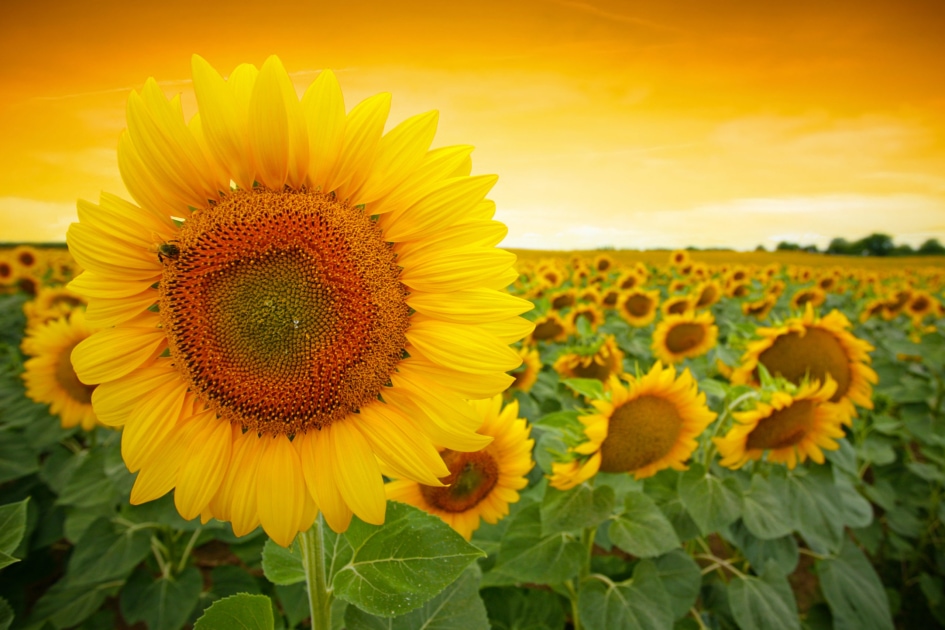
“Keep your face to the sunshine and you cannot see the shadow. It is what sunflowers do.” – Helen Keller
Helen Keller knew enough about the wisdom of this bright and beautiful plant to share it with others. While she understood and celebrated the sunflower’s ability to follow the movement of the sun, she could not have known of its power to cleanse the earth. Thanks to the wonders of science, we do now, and it is a beautiful and useful wisdom!
The sunflower, or Helianthus annuus, from the Greek helios, meaning “Sun,” is a powerful plant in the world of industry and art. There are few people in the world who would be unable to recognize its shining yellow face in a garden or field. This bright, cheerful flower has given us a delicious and hardy seed, a versatile cooking oil, leaves for cattle feed, a stem strong enough to make paper, and of course, much beauty. It has also, as of late, brought us something even more special: the ability to remove harmful toxins from our soil, helping us to more safely handle the earth around us and grow food for ourselves and our communities.
The sunflower is one of many plants that are now known to aid in “phytoremediation,” a process that employs various types of plants to remove, transfer, stabilize, and/or destroy contaminants in the our soil, water and air. Compared to other cleanup methods, such as soil excavation or pumping polluted groundwater, phytoremediation has become a clean, cost-effective and environmentally-friendly way to reclaim and reuse land that has been tainted by poisonous chemicals and heavy metals.
I was first introduced to phytoremediation and the role that sunflowers play in that process after my housemates and I to put a home garden in an area we knew to be moderately contaminated with lead. We did not know much about the science behind it but figured it was a good first step in making our garden a healthy, pollutant-free space. What we discovered was quite remarkable. The first year we did a soil test, we learned we had a low to medium contaminant level. That meant we could get away with growing and eating fruit bearing vegetables like tomatoes, eggplant, and snap peas, with little to no-risk (we opted not to grow anything but sunflowers, though, that first year). Only one year later, after planting the sunflowers, we had no recognizable levels of lead in our soil. That year we planted our first bountiful urban home garden.
It is important to note, we didn’t just plant sunflowers. We also amended our soil with compost and manure, which not only helped the sunflowers grow big and strong, but also aided in the process of phytoremediation and lead abatement. We were also fortunate to have started with relatively low levels of lead in our soil.
Almost as important as planting the sunflowers, though, was what we did afterward. After the sunflower season ended, we did not permit our sunflowers to decompose in our garden space or put them in the compost, as that would only have returned the contaminants into the newly cleansed land. Instead, we took them to the dump, and though the levels of lead concentrated in their stems, leaves, and flower heads would have been relatively low, we labeled them “hazardous materials,” just to be safe.
Sunflowers are not only able to absorb lead, but other dangerous heavy metals such as arsenic, zinc, chromium, copper, and manganese. Probably the most astounding example of phytoremediation was the use of a type of sunflower to clean up contaminated soil in the Ukraine following the Chernobyl disaster, one of the worst nuclear power plant accidents in history. Other communities from far and wide have learned about and employed the magic healing of sunflowers. “Project Sprout,” based out of Tulane City Center in New Orleans, focuses on planting bio-energy gardens that include plants like sunflowers as a way to remediate soil, yield a crop for bio-fuel production, provide green-collar job training and to support urban revitalization in neighborhoods of New Orleans that suffered devastating damage from hurricanes Katrina and Rita.
Sunflowers have an amazing capacity to not only transform the health of a space in your community, but also add beauty.
If you’re looking to clean up your soil, or just want to enjoy the beauty of these flowers in your garden, here are some great varieties to try:
Soraya — a nice bright orange sunflower that grows to about 6 feet with a single stem.
Ring of Fire — a multicolored starbust sunflower that’s around 3 to 4 feet tall.
Russian Mammoth — a beautiful yellow flower that can grow to be 8 feet tall!
Velvet Queen — red and orange with burgundy undertones and grows to an average of 5 feet.
Sherie Blumenthal
Sherie Blumenthal is a Food Access Coordinator with Lots to Gardens, an urban gardening and community nutrition initiative sponsored by St. Mary’s Health System in Lewiston, Maine.


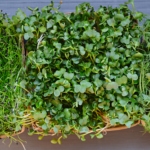
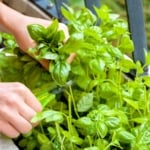
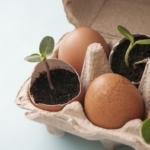
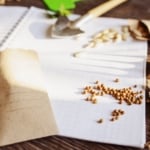
What happens to the birds that eat the Sunflower seeds
I’ve been growing sunflowers around my house where we had old lead-painted windows removed. Not looking to grow food there or anything, just tying to clean the soil because I like the idea of it. I see there are some experts here and I have two questions for the scientists. 1. What variety(ies) should I plant? and 2. I understand that the plants need to be thrown away and not given to yard waste or composted. Is it OK to save the seeds to plant for the following year, though, or not? Thanks!
Do you know if the heavy metal contamination accumulates in the seeds? Is it safe to eat sunflower seeds and butter?
awesome article!! but how long does it take for the sunflower to reduce lead content to a safe level???
I am the scientist who first published the concept of using plants to decontaminate soils with excessive metals. I have published papers and reviews which clearly show that Pb phytoextraction cannot occur with addition of chelating agents such as EDTA, and that one application of EDTA at the recommended rate (5 mmol/kg soil) would cost $20,000/ha of soil. And the added EDTA causes leaching of Pb and other metals into groundwater; more metals moved to ground water than were accumulated by any of the test plants. The idea of lead phytoextraction was promoted by Phytotech which patented the idea, but then went bankrupt because it was not permitted by environmental agencies due to the Pb leaching. No plant naturally accumulates high amounts of Pb from soils because Pb is too insoluble in soils.
In practice, science has shown that we can add compost and phosphate fertilizers to Pb rich soils to reduce the plant uptake of Pb and to reduce the absorption of Pb from soil ingested by animals. A feeding test with humans showed 69% reduction in soil Pb bioavailability by treatment with phosphate. So soil amendments can induce “phytostabilization” of soil Pb, while phytoextraction is not at all helpful for Pb.
Thank you, Rufus, for responding!
Thank you Rufus. Your comment is so important. My children were poisoned by lead in our historic home, so every bit of knowledge I can gain about this invisible poison is priceless. I know the author of the article was trying to be helpful, but it turns out that Pb is too tricky for most people.
In the second sentence, should “with…EDTA” be “without…EDTA”? It doesn’t seem to make sense otherwise. Thanks.
Sunflowers DO NOT remove lead from soils! This is a myth. Ask any trained soil scientist
Hi E Washington, We have researched this subject throughly, and stand by our story and our findings. The University of Virginia conducted a study that made headlines as well: https://news.virginia.edu/content/uva-undergraduate-researcher-studies-sunflowers-power-clean-soil
If you would like to present evidence to the contrary, please feel free to share it here.
In your first year you tested your soil and discovered lead. What soil test told you had lead, and at those levels? I understand that testing soil for heavy metals is so cost prohibitive that the extension office in our area could not foot the bill for their on property. This occurred in 2011-12. ANd things obviously have changed. Still I’d like you to share some specifics on what tests you had done the first year, and the year after planting sunflowers. Thanks.
Great article..
My question is ,what happens to the contaminated sunflowers when they get taken to the dump??
How do they get disposed off and where ??
and what do you do with the sunflowers when there is no dump?
Hi Angela, great question! As the story states, if dropping them off at the dump, they would have to be labeled as “hazardous materials.” You would need to investigate where to dispose of hazardous materials if you grew sunflowers for the purpose of decontaminating soil. Your town hall may have this information. We did a little more digging and found that much research is happening on this very topic. “If the harvested sunflowers are disposed of by burning them, the contaminants could be dispersed through smoke, which is why the researchers are considering using hyperthermophilic aerobic bacteria–used to produce compost–to decompose the plants.” We’ll continue to look into this topic.
Sunflowers that are grown for food sources are grown in safe soil.
do sunflower has solar powers
So if i purchase sunflower seeds for snacking, are they tested for toxicity before being packaged or could they possibly contain toxins?
I bought sunflower seeds for snacking from ‘Anthony’s’ brand. It has a warning label stickered on the back stating that it may contain lead, and they provided a website http://www.P65warnings.ca.gov/food So yes, the seeds may contain some lead. But we don’t know if it’s a safe amount or not, they had to put the label on just for legal purposes. That was very intuitive of you to realize that the lead is likely in the seeds! My children have been poisoned by lead from living in a historic home. We now get our lead checked every year and I wish the government would encourage all Americans to do the same. Lead is in many places but can be cleansed through diet and exercise. Health to you.
While they remove contaminants from your soil, how does they dump get rid of these. Do they just toss in the landfill and contaminate that soil? Do you have to go to a special landfill that knows how to handle these? I assume they know just what to do with old oil and paint, but this sounds uncommon enough to where some would just throw in the compost.
So, does this mean that sunflower seeds are not safe to eat?
I’ve also heard that carrots absorb a lot of contamination from soil (do not eat 0f course) but I have not found verification of this. If anyone knows or has information on this I would appreciate knowing for sure. thanks
I was wondering what kind of Sunflowers can you grow for eating ? As we love to have them on Salads and such. And can you find them at a local store ,or do you need to order them?
Thanks for your help.
Thank you for the information. I grow sunflowers as a pollen source for my honeybees. Has anyone studied the effects on hive populations? I would be interested in any information you have on honeybee health and sunflowers.
They planted tomatos in gasworks park in seattle for the same purpose. The tomatos were not consumed of course but its nice to know that nature can clean up some of our mistakes.
No, Tim and Nora, you or your animals do not consume sunflowers if you are planting them for phytomediation. (If you don’t know what’s in your soil, get a soil test before you plant food crops; talk to your nearest university extension office.) As the article says, dispose of the contaminated plants–the author took her “lead” sunflowers to the dump, labeling them “hazardous waste”. Great article, and a useful green cleaning method.
Thanks for good information. We love to eat sunflower seeds and wondered if we plant some sunflowers are they edible since they are decontaminating the soil with lead?
Lillian – if you right click on your mouse a menu should appear with a print option.
I would like to print some of your articles, but can not find
Print this page
Very good information, thanks. My question is when do we plant the sunflowers to let
them have time to cleanse our garden? We do the square foot garden with the raised
beds.
Thanks for any help you can give me regarding this request and I remain,
Sincerely,
Grace Kennedy
I’m curious if the seeds of a sunflower used for phytoremediation would contain heavy metals. If so, it seems that using them in a heavily contaminated area would poison animals and possibly be worse for the ecosystem than leaving them in the soil.
Tim, Yes, it would be dangerous for birds or animals to eat the seeds. You can solve this problem by draping bird netting over the sunflowers once they start to develop seeds. Some evidence also suggests birds and other animals naturally avoid seeds from contaminated flowers.
What a great article! Thanks for the info. I’ve always loved sunflowers for their spectacular flower & also as a natural bird feeder.